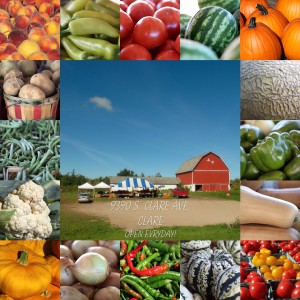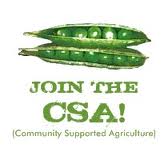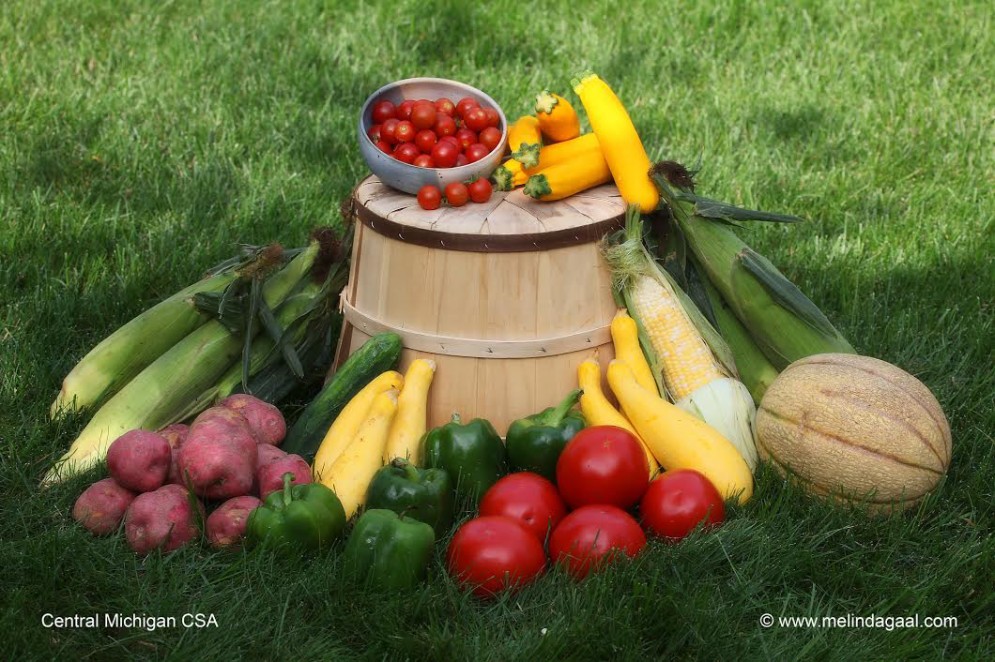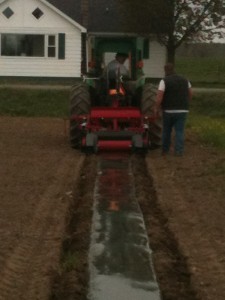 Late in May of this year I will begin making weekly deliveries of fresh picked produce to families across Mid Michigan. The Central Michigan CSA has pick up locations in Gladwin MI, Midland MI, Mt. Pleasant MI, and Clare MI and they are all at the local community farmers markets. This year we will have around 150 families who receive our veggies each week through the CSA program, this makes me ask, “How’d we get here?” This is our “story” so to speak, and the answer to that question.
Late in May of this year I will begin making weekly deliveries of fresh picked produce to families across Mid Michigan. The Central Michigan CSA has pick up locations in Gladwin MI, Midland MI, Mt. Pleasant MI, and Clare MI and they are all at the local community farmers markets. This year we will have around 150 families who receive our veggies each week through the CSA program, this makes me ask, “How’d we get here?” This is our “story” so to speak, and the answer to that question.
To be honest, the concept of growing food for people as a lifestyle and income source seemed a bit far-fetched to me at first and it wasn’t a straight path at all, that’s for sure. I’ve been an entrepreneur since my early twenties, in fact, I’ve only had a couple jobs in my life. I worked at a local nursery and garden center for five years through high school and College, then I was a laborer in the International Laborers Union for a few years. I built a commercial concrete construction company, which occupied my attention for about 9 years and in 2006 I began an Internet business which was basically consisted of a small network of small business websites. I made money through selling advertising and I learned how to build a large audience. It seems crazy looking back, but growing quality produce and building the Central Michigan CSA couldn’t have happened without each of these experiences.
My First Experience in the Produce Business
I was getting out of the Concrete industry in 2006 and I decided to help a friend with their successful family greenhouse business, it was during this time that I really got a birds eye view into the retail industry and I thought it was pretty exciting. This greenhouse business was a spring/early summer business, it was don’t by June and the sales lots were shut down for the year. I had the idea to offer fresh picked produce at one of the sales lots and the owner was willing to allow me to use the lot as an open air produce market. It was an everyday market and it went over well. We started it in Mid-August and sold produce through September and October. We also sold pumpkins, fall décor, mums, and then Christmas trees, wreaths, and decorations. I learned a ton and really fell in love with the fresh produce part of the business. It was fast paced, and we were offering a product that was pretty tough to get. We located a couple communities of Amish produce growers and this was our sole source of fresh produce. It was a grueling supply chain, I was after fresh vegetables every day and boy did I go through some fuel! This is what started it all, it was really a “by chance” situation, I was just looking for something to do as I build my online business into a full time income.
Growing up with Gardens
I grew up working in our families gardens. We had two large gardens that equaled about 1.5 acres in size. To be completely honest, I was like most other kids and I didn’t really enjoy working in the garden. Twelve and thirteen year olds have another idea of a good time and I was no different. Some kids I’ve met through the CSA really get into growing food and learning about farming, I wasn’t one of those. Today I’d say the most rewarding part of growing produce is the Challenge. There is always more to learn, more to do, and more grow. Learning why one tomato tastes so good and the other doesn’t is the key to growing awesome tasting tomatoes, and any other variety. When I was growing up, work in the garden was more about getting it done than anything else, but now I know there is much more than meets the eye.
Learning from Others
The only way to create a successful CSA Farm is to acquire knowledge and convert it to experience without going broke to often. My knowledge with the Internet and experience in writing for the web made it possible to communicate my CSA offering in a successful way. I was able to connect with people online who where looking for what I was offering, that was the easy part for me. I learned every thing I know about building websites, getting found online, and communicating on the web by talking with others and studying what they did. Growing the variety and quantity of great tasting, nutritious vegetables was the more difficult challenge for me.
Essentially I just took the same approach in regards to the CSA farm, which is talking with people, I have several soil consultants I work with today to achieve consistent quality produce. I’ve learned growing better soil through improved soil biology and soil quality is the only way to produce quality vegetables in a sustainable way. There are essentially two schools of thought when it comes to farming, one is death and one is life. The first focuses on killing pests and disease and second focuses on building healthier soils which sustain plants that are healthy enough to stand up to pest and disease pressure on their own, which is how God created them. I’ve learned a ton of interesting just by chatting with soil consultants and farmers who care about the crops they grow. There are dozens of opportunities every year to go to “Farm Day” and workshops where growers and organic growing product suppliers share their experience and information. I’ve always held the belief that collaboration beats competition every time. Not all business models or industries will bear that out in results, but farming great food does.
I’ve heard it said that failure is the best teacher, in business, someone else’s failure is the best teacher. This has been critical to growing a successful CSA program. During the winter of 2006 I took to the web to find CSA programs that weren’t operating anymore, or ones that had poor feedback on the Internet. I talked with around a dozen farmers who once had a decent CSA program but no longer did. Most of farmers I talked with didn’t start out with enough members to invest in the program properly. Several had no irrigation plan, and most didn’t take a proactive approach to fungal diseases and blights. A few never did a drop off the WHOLE season, there members were upset and vocal about it, I don’t blame them. Not all of the programs were complete failures, most of the farmers just didn’t feel it was for them. Not all farmers are cut out for working with the public and fielding peoples questions, suggestions, and concerns. I realized that some of the same reasons that motivated me to build a CSA farm were the same things that made these farmers want out. To me, it is much more fulfilling to actually be growing food for families you know or will get to know. Talking with these failed CSA programs steered me in a more successful direction and I credit the conversations I had before I even started the CSA with much of our success.
I think that the satisfaction of our members really starts with my method of communicating the program. I’ve updated and edited our CSA Page to better communicate
what the CSA program is and I try to use language that will connect with people who are just right for our specific CSA. No farmer can feed everyone, I realized it was about getting the members who were a good fit for our farming philosophy and the way we implement the program on a weekly basis. I’ve also tried to be flexible and I think people appreciate that. Here are some of the specific challenges I felt I had to overcome before I started to build the Central Michigan CSA.
- Find a fail proof irrigation method that is cost effective and sustainable.
- Find a way to control weed pressure without excessive labor.
- Find a way to reduce fugal disease and blight.
- Develop a method of growing that doesn’t rely on pesticides, herbicides or other toxic chemicals.
- Develop a plan to grow more than our members can possibly consume, but not have any go to waste.
- Have a plan B so that in the event of unforeseen disaster our members will still get their weekly produce.
In my opinion a good CSA program needs to address each of these 6 points in order to responsibly advertise their service. And that is really what it comes down to. A CSA farm provides a service of growing a families food for a predetermined amount of money. Ultimately these six items are the key to my families financial security as well as the satisfaction of our members, the two are inseparable. The Central Michigan CSA isn’t an “add-on” or additional income stream for us, it’s how we make a living so we take it seriously.
There is an old adage that says; “You get out of something what you put into it.” A lot of unseen aspects of our farm and CSA are what make it successful, it’s what we put into it. Meeting those six challenges was done with a little research, some investments, and making some changes in our business plan. For instance we purchased a raised bed layer that forms a raised bed, wraps it with a bio-degradable mulch and installs a drip tape for irrigation. This system is the key to controlling blight, and eliminating weed pressure in the row. We just have to cultivate in between rows which will be reduced this year when we plant a summer cover crop in between.
How Farming Philosophy Affects the Success of a CSA
As I talked with our first CSA members on the phone the first year I realized that our growing methods would have to be chemical free. I had already developed a network of small Amish family farms who were growing chemical free, non-GMO produce for our farm stand so I was headed in that direction anyway. But my philosophy has changed over the last several years. The first field I planted had been cow pasture for the last thirty years, it wasn’t a real big area, maybe a 1/2 acre. I plowed that area in the fall before the year I planned to start the CSA and planted it in the spring. The yield and nutrition of the produce was great, plants were healthy and the fruit finished well on plants that were still healthy. I used no spray or fertilizer at all the first year, apparently there was sufficient nutrients in the soil from the decomposing pasture that was turned under from the year before. The second year didn’t go as well on the area that was in it’s second year of growing so I had to use synthetic fertilizer, my members where aware of this and, like me, didn’t see fertilizer as a bad thing. My farming philosophy back then was pretty simplistic and worked well for a time. It looked something like this:
We grow nutritious produce using natural farming methods and don’t use any sprays or chemicals on our produce.
Since then my farming philosophy has changed a bit and I’m sure it will continue to change as I, the farm, and the CSA all grow. We use green manure, or cover crops, to reproduce that first year nutrient pool the garden experienced. We try to get our vegetable crops out in time to start winter wheat or something like that. We don’t take a crop from the cover seeding we plow or disk it under. We also work to improve out soil health with compost and other soil amendments that the soil samples call for. We stick to strictly organic compost and naturally derived minerals and nutrients. Soft rock phosphate, chicken manure, sea kelp, fish emulsion, and other naturally occurring nutrients replace what our plants take out of the soil. We have rather light sandy ground and we improve our organic matter and soil biology each year little by little. Vegetable plants and the fruits they produce need certain nutrients at certain times and we do our best to make sure they get it. Soil and leave sample tests are quite advanced these days and we work with a consultant who can return test results in three days. Over time we have developed a group of naturally sourced foliar feeds that get the nutrients the plants need immediately, with the long term goal of improving the soil to the point that the natural biology produces what they need.
Constant improvement is the key to growing the most nutritious produce we can grow. It really is as simple as putting more back than you take out. Sustainable farming practices are the best way to grow great tasting nutritious produce in the most economical way possible. Many of the practices are simple and hundreds of years old, most of the technology I use is just insurance, it lets me head of problems that could hurt our crops before they do.
What’s Next~ Planning for a “Mature” CSA
 I continue to talk with other CSA farmers who have been at it a lot longer than I have. We have a farm goal of 200 members and we will be approaching that soon. There are several plans I have for the farm and I’d like to incorporate them into the CSA as well. A commercial kitchen would be an awesome addition to our farm and starting a winter canned food share for CSA members would work great with that. Adding beef, pork and poultry to our CSA offerings is another idea that could work well with our farm plan. One of the best resources for improving the CSA has been our members. We are blessed with great CSA members who aren’t afraid to offer feedback and that has helped a ton.
I continue to talk with other CSA farmers who have been at it a lot longer than I have. We have a farm goal of 200 members and we will be approaching that soon. There are several plans I have for the farm and I’d like to incorporate them into the CSA as well. A commercial kitchen would be an awesome addition to our farm and starting a winter canned food share for CSA members would work great with that. Adding beef, pork and poultry to our CSA offerings is another idea that could work well with our farm plan. One of the best resources for improving the CSA has been our members. We are blessed with great CSA members who aren’t afraid to offer feedback and that has helped a ton.
I hoped you learned more about my experience with the Central Michigan CSA in this article. If you have any comments please share them. If you have any questions about starting or growing a CSA program or growing nutritious fruits and vegetables here in Michigan, please ask.
J.Crawford



0 comments… add one